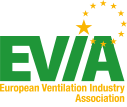EVIA position on the Circular Economy Action Plan and the Sustainable Products Initiative
15/06/2021

Transitioning to a regenerative/circular growth model has been on the EU’s agenda for at least the past decade. The European Green Deal (EGD) and the Circular Economy Action Plan are blueprints aimed at putting the EU on the path towards achieving a climate-neutral, resource-efficient, and competitive economy by 2050.
The Energy related Products (ErP) framework, comprising the Ecodesign Directive and the Energy Labelling Regulation is a success. It continues to deliver improvements in the energy efficiency of products, by pushing inefficient models off the market and driving manufacturers to bring the most efficient product designs to market.
EVIA would stress that a number of key principles must be safeguarded in the Sustainable Products Initiative’s (SPI) revision of the Ecodesign Directive. Requirements must remain product specific and set in the product implementing regulations. Enforceability must be at the forefront of considerations, requirements must be enforceable by Market Surveillance Authorities (MSA) to limit circumvention, maintain a level playing field and deliver on sustainability objectives. Requirements should also be relevant and proportionate to the benefits pursued.
Sustainability is inherent in the very name of Ecodesign. ErP is a model that via the so called ‘Brussels effect’, ultimately provides a competitive advantage to EU industry. Using the framework to set material/resource efficiency requirements should therefore inculcate a circular competitive advantage to be added to the existing energy efficiency advantage. The long-term competitiveness of EU industry in the green transition must be at the forefront of planning Having delivered successfully on energy efficiency, EVIA support the Commission’s ongoing approach to integrate circular economy/sustainability into the ErP framework through the introduction of material/resource efficiency requirements.
EVIA recognises that material/resource efficiency is, however, a component of sustainability, which encompasses the entire ‘life-cycle’ environmental impact, in addition to the use-phase energy efficiency and carbon impact of a product, for example carbon emissions embedded in production and those related to end-of-life. Under the Circular Economy Action Plan 2.0 (Annex) the Commission indicated a range of possible legislative measures to deliver on sustainability:
- Legislative proposal for a sustainable product policy initiative
- Legislative proposal empowering consumers in the green transition
- Legislative measures establishing a new “right to repair”
- Legislative proposal on substantiating green claims

